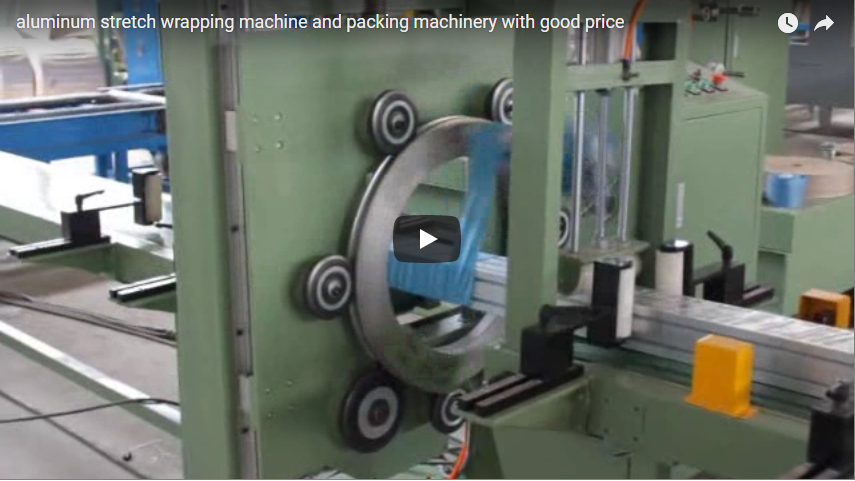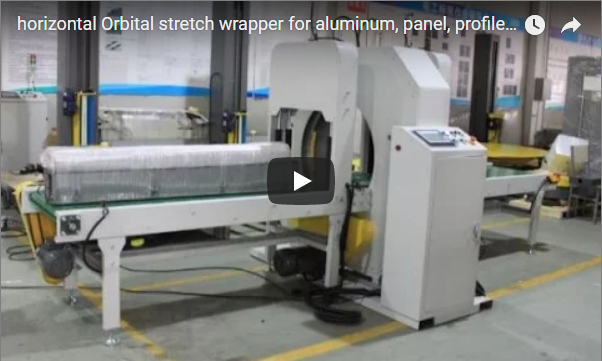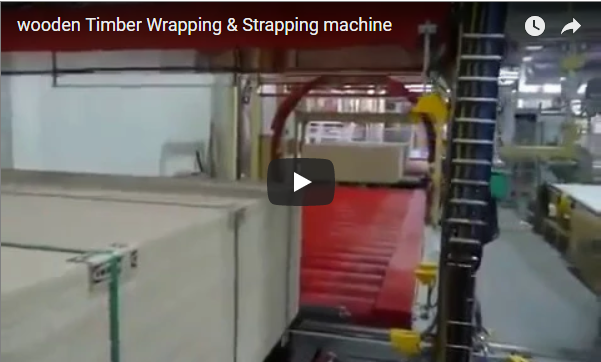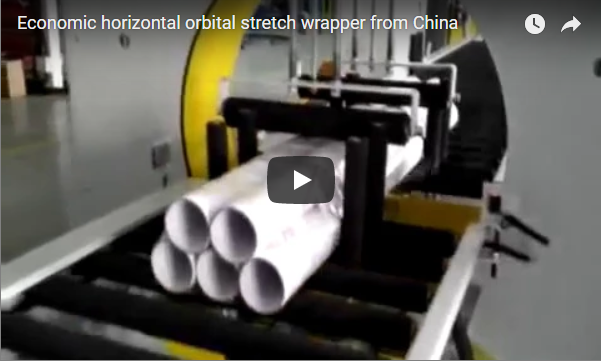Unpacking Efficiency: A Comprehensive Guide to the Horizontal Orbital Stretch Wrapping Machine
In today's fast-paced logistics and manufacturing environments, ensuring products arrive at their destination undamaged is paramount. For items like motors, trays, long profiles, or bundled goods, traditional packaging methods can be cumbersome and insufficient. Enter the Horizontal Orbital Stretch Wrapping Machine, a specialized solution engineered for superior protection and operational efficiency.
This isn't just another piece of packaging equipment; it's a strategic asset for businesses needing reliable load containment and protection for horizontally oriented products. Let's delve deeper into what makes this machine indispensable.
1. What Exactly is a Horizontal Orbital Stretch Wrapper?
Often referred to as a "ring wrapper," a horizontal orbital stretch wrapper is specifically designed to apply stretch film around products that are best handled or conveyed horizontally. Unlike traditional turntable wrappers where the load rotates, here the product passes through a rotating ring that dispenses the stretch film. This method is ideal for:
- Long items (pipes, lumber, extrusions)
- Bundled products (tubes, rods)
- Awkwardly shaped goods
- Items needing stabilization along their length (like motors mounted on skids or trays)
The core principle involves securing the product by tightly wrapping it in multiple layers of stretch film as it moves horizontally through the machine's wrapping ring.
2. The Core Mechanism: How It Works (Technical Deep Dive)
Understanding the mechanics reveals the ingenuity behind its effectiveness:
- Infeed/Outfeed Conveyors: Products are typically fed into the machine on powered conveyors. These ensure smooth, controlled movement through the wrapping zone.
- The Wrapping Ring: This is the heart of the machine. It rotates perpendicularly to the product flow. Mounted on the ring is the film carriage.
- Film Carriage & Pre-stretch: The carriage holds the roll of stretch film. Crucially, most modern orbital wrappers incorporate a powered pre-stretch mechanism. This stretches the film before it's applied to the load (often by 150-300%). This maximizes film yield (reducing costs) and enhances load containment force.
- Film Application & Cut/Clamp System: As the ring orbits the moving product, film is dispensed and tightly wrapped around it. Automated systems typically include mechanisms to clamp the film at the start, wrap the product, and then cut and secure the film tail at the end of the cycle.
3. Key Technical Specifications & Parameters to Consider
When evaluating or understanding these machines, certain parameters are critical:
- Ring Diameter: Determines the maximum cross-sectional size of the product that can pass through (e.g., 400mm, 600mm, 900mm, or larger).
- Conveyor System: Speed (variable or fixed), width, height, and load capacity are crucial for matching production flow and product dimensions.
- Wrapping Speed (RPM): How fast the ring rotates, impacting throughput (e.g., 30-100 RPM).
- Film Specifications: Compatible film width (e.g., 125mm, 250mm), core diameter, and roll diameter.
- Pre-stretch Ratio: The level of film elongation achievable (e.g., up to 250%).
- Control System: Typically PLC-based, allowing for adjustable wrap programs (number of wraps, tension control, overlap settings).
- Power Requirements: Voltage, phase, and power consumption.
- Optional Features: Top presser plates (for unstable loads), safety fencing, integration with upstream/downstream automation.
4. Unpacking the Benefits: More Than Just Protection
Investing in a horizontal orbital wrapper brings tangible advantages:
- Superior Product Protection: Provides a tight, multi-layered shield against dust, moisture, scratches, and shifting during transit and storage. This is especially vital for sensitive items like motors or finished goods.
- Enhanced Load Stability: Effectively unitizes bundles or secures components to trays/skids, preventing movement and potential damage.
- Operational Efficiency: Automates a previously manual or semi-automatic process, increasing throughput and reducing labor costs. Consistent wrapping cycles ensure uniformity.
- Material Savings: Powered pre-stretch significantly reduces the amount of film consumed per wrap compared to manual or basic mechanical stretch methods.
- Versatility: Customizable machine configurations and adjustable wrapping parameters allow handling a wide range of product sizes and shapes.
- Professional Presentation: Neatly wrapped products convey quality and care to the end customer.
5. Real-World Applications: Where Does It Shine?
The utility of horizontal orbital wrappers spans numerous industries:
- Building Materials: Wrapping lumber, pipes, conduits, insulation panels, doors, windows, and aluminum/PVC extrusions.
- Manufacturing: Securing motors, engines, pumps, assembled components, furniture parts, and appliances.
- Metals Industry: Bundling rods, bars, tubes, and coils.
- Textiles: Wrapping rolls of fabric or carpet.
- Logistics & Distribution: Overwrapping palletized goods for extra stability or protection, especially non-standard pallet sizes.
6. From Personal Experience: Navigating Implementation & Optimization
Having worked with various packaging lines, integrating a horizontal wrapper effectively involves more than just the purchase. Key insights include:
- Matching Machine to Application: Don't just look at the max product size. Consider the range of products, required throughput, and integration needs. Sometimes, a slightly larger or faster machine provides future flexibility.
- Conveyor Integration is Key: Seamless flow from upstream processes, through the wrapper, and downstream is vital. Ensure conveyor speeds are synchronized and transitions are smooth to prevent jams or product damage.
- Operator Training: Proper training on setting wrap parameters (tension, overlap, pre-stretch), film loading, and basic troubleshooting drastically improves efficiency and minimizes downtime. Incorrect settings can lead to film breaks or inadequate containment.
- Film Choice Matters: Not all stretch films are created equal. Work with suppliers to select a film with the right gauge, cling, and stretch properties for your specific application and machine's pre-stretch capabilities. Testing different films can yield significant performance and cost improvements.
- Preventative Maintenance: Like any machinery, regular checks on rollers, belts, sensors, and the cut/clamp mechanism are essential for reliable operation. Lubrication schedules and wear part monitoring prevent costly breakdowns.
7. Choosing the Right Machine for Your Needs
Selecting the ideal horizontal orbital stretch wrapper involves considering:
- Product Dimensions & Weight: Maximum and minimum length, width, height, and weight.
- Throughput Requirements: How many products per hour/shift need wrapping?
- Level of Automation: Standalone machine vs. fully integrated line.
- Budget: Initial investment vs. long-term operational savings (film, labor).
- Vendor Support: Availability of spare parts, technical service, and training.
8. Future Trends in Orbital Wrapping
The technology continues to evolve, with trends focusing on:
- Increased Automation: Integration with robotics for loading/unloading and AGVs.
- Smart Features (IoT): Remote monitoring, diagnostics, and performance tracking.
- Sustainability: Machines optimized for thinner gauge films or designed for compatibility with recycled-content or biodegradable films.
- Enhanced Safety Features: Advanced light curtains, interlocks, and guarding.
Conclusion: Wrapping Up Value
The Horizontal Orbital Stretch Wrapper is a powerful tool for protecting valuable products, streamlining packaging operations, and reducing costs associated with damage and film consumption. Its ability to handle long, heavy, or awkwardly shaped items makes it a cornerstone of packaging efficiency in diverse industries. By understanding its mechanics, benefits, and implementation considerations, businesses can leverage this technology to ensure their products are securely wrapped and ready for the journey ahead.
For more details on specific models and configurations tailored to your needs:
https://www.fhopepack.com/Horizontal_wrapping_machine.html
Contact us for inquiries: info@fhopepack.com






